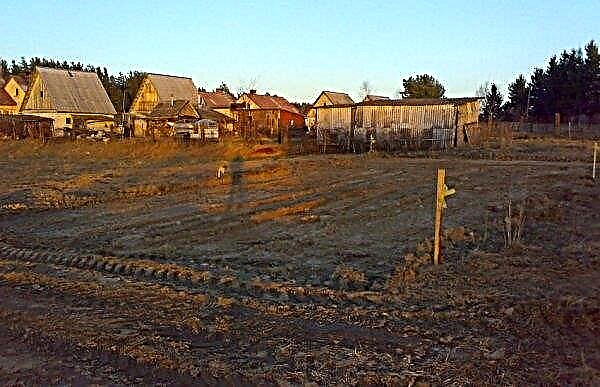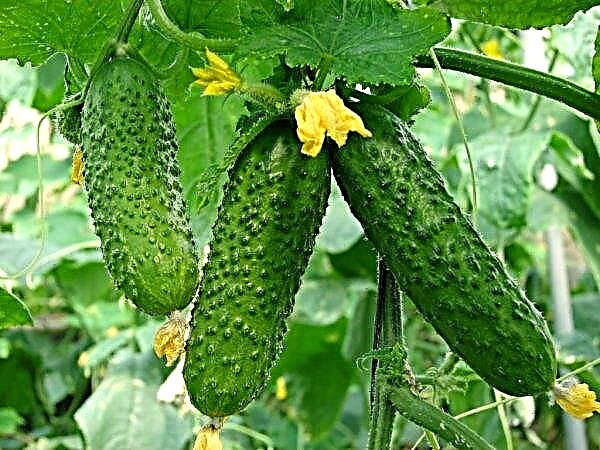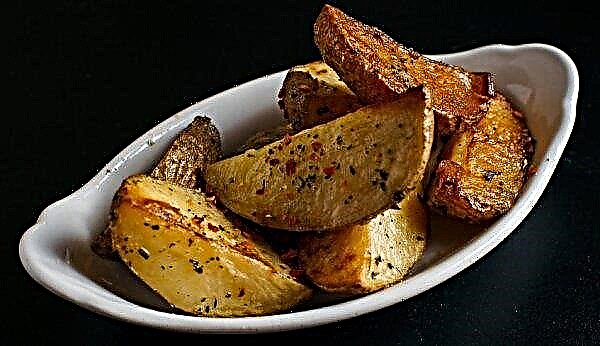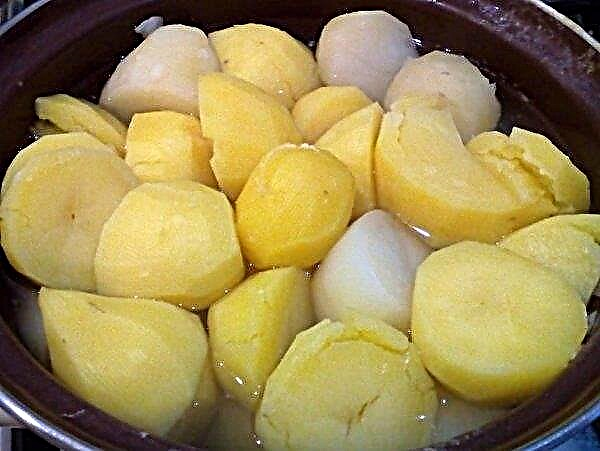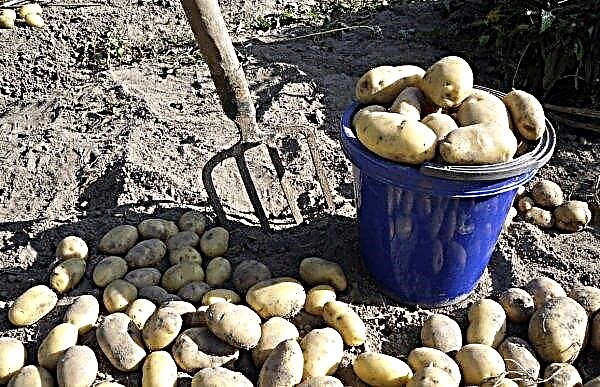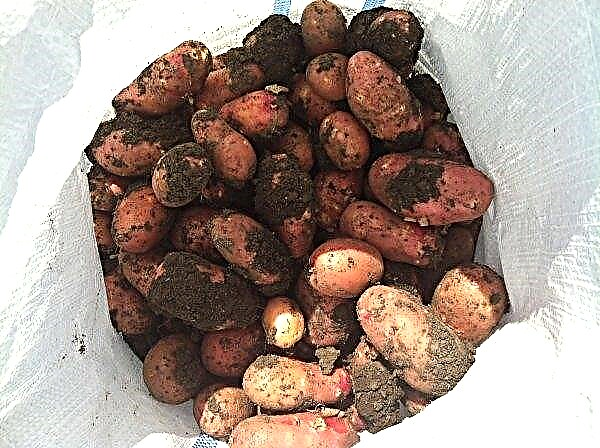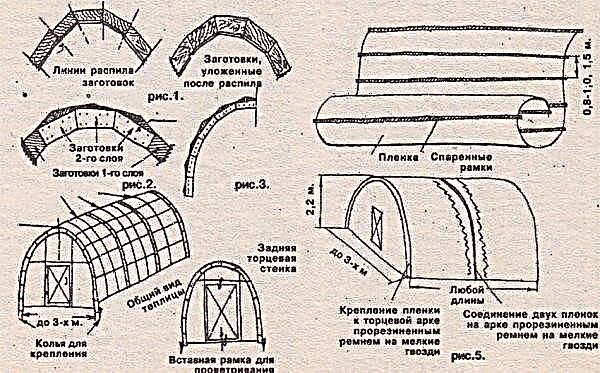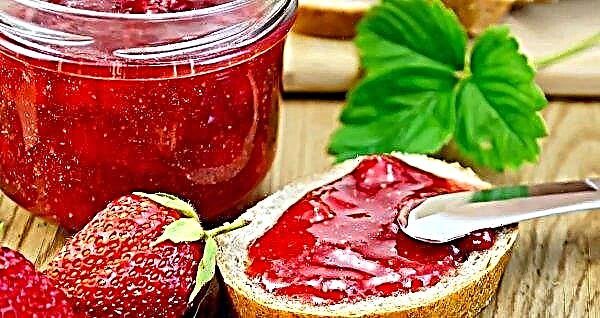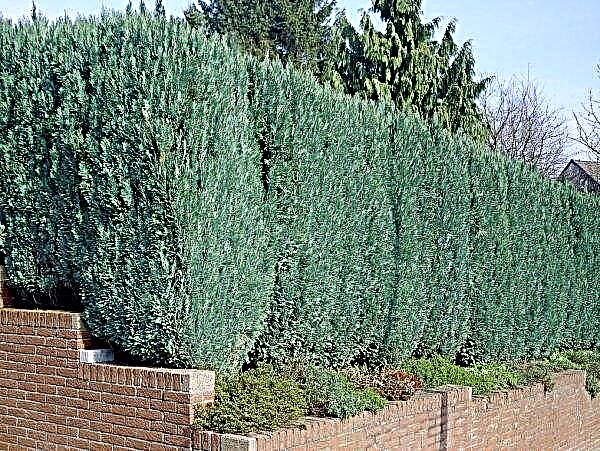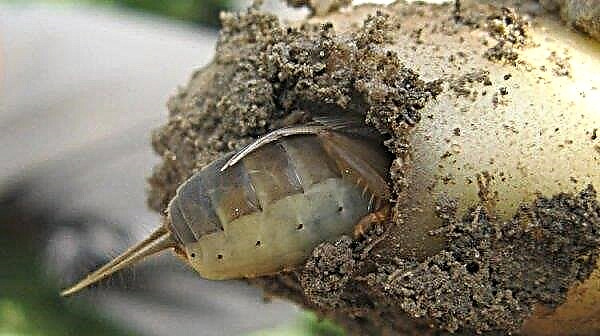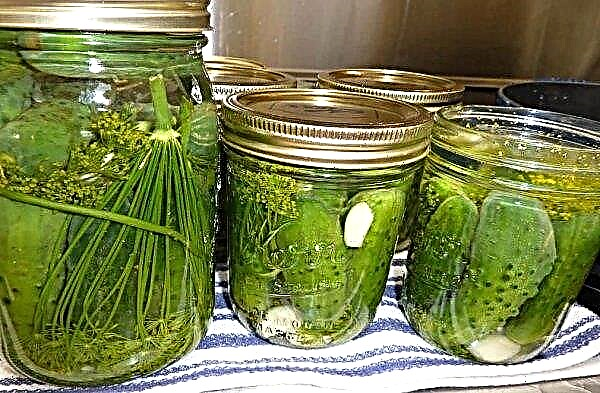Raspberry is a berry that is very popular and special love among many gardeners. It’s all the more unpleasant when, for no apparent reason, planting crops that have been fruiting for several years before this start to hurt and wither. The reason for this can be diseases and pests, which, the most common, will be described in this article.
The main diseases of raspberries
The sooner the initial signs of the disease are detected, the more chances you will have of a successful treatment. Therefore, it is very important to know about the first symptoms of the onset of the disease, as well as what measures should be taken immediately.
Fungal diseases
Fungal diseases are perhaps the most common not only on raspberries, but also on garden crops in general. Very often, the cause of the occurrence and development of such problems are increased humidity, lack of sunlight and neglected, too dense plantings.
Purple Spotting (Didimella)
The causative agent of purple spotting is the didimella fungus. Raspberry stalks cover elongated pink spots. First of all, buds and stems are susceptible to the attack of the fungus, in a more severe and neglected form, didimella can go to branches and petioles of leaves. Purple spotting has pronounced signs, which allows, especially in the early phase, to diagnose it almost unmistakably:
Purple spotting has pronounced signs, which allows, especially in the early phase, to diagnose it almost unmistakably:
- the spots increase in size and stretch, which is clearly visible on the light surface of the annual growth;
- with the increase in the size of spots, they darken, acquire a brown color with a burgundy hue. At the same time, in the middle part of the spot, you can see light areas on which rust-colored tubercles are formed - these are didimella pycnids;
- with the development of purple spotting, areas affected by spots crack, the bark peels off. The spots themselves grow even more, merging into a single large array, after which the shoots break. The buds stop growing and dry out.
The most likely risk of developing the disease in late summer or early fall. It is then that the period of maturation of the pathogen begins. Among the risk factors that contribute to the spread of purple spotting, we can distinguish:
Among the risk factors that contribute to the spread of purple spotting, we can distinguish:
- dense landings;
- high humidity;
- a small amount of sunlight;
- concomitant disease - stem gall midge.
The older the plant, the more susceptible it is to the disease. Ashipless cultivars with brown or red stems are less susceptible to disease.
Did you know? From 1 ha of forest raspberries, bees can collect up to 70 kg of honey, from the same area of garden culture - 20 kg less. In addition, by collecting nectar, bees increase raspberry yield by 1.5-2 times.
White spotting (septoria)
 Signs of damage to the plant with white blotch are very similar to the symptoms of purple blotch. The causative agent of the disease is Septoria fungus, hence the second name - Septoria.
Signs of damage to the plant with white blotch are very similar to the symptoms of purple blotch. The causative agent of the disease is Septoria fungus, hence the second name - Septoria.
The main external difference between the signs of the onset of the disease and the same symptoms of didimella is in the color of the spots. At first they are brown, then lighten, become almost white. In the central part of the spots, black dots are visible - colonies of fungus spores. The more spots become, the more it affects the condition of the plant - the leaves turn yellow, then it dries and crumbles.
If you start the development of the disease to this stage, the plant may die. The most favorable conditions for the development of the disease are a high level of humidity and an air temperature of +20 ... + 22 ° C.
Anthracnose
A disease affecting foliage and stems of plants. It is very common both in small private gardens, and in large agricultural enterprises. In terms of distribution and danger it is second only to gray rot, perhaps.

The first sign of the onset of the disease is the appearance of individual small spots on the stems. The spots are light gray in color, surrounded by a rim of plum hue. Those parts of the stem where spots form are dry. The spots increase in size, combine into one large massif, forming large ulcers. The bark on the stems begins to peel off, the foliage curls and dries.
As with most fungal diseases, the conditions under which the risk of developing anthracnose increases are traditional: excessive thickening of plantings, high humidity, cool summers, lack of measures for the prevention of viral diseases and lack of sunlight.
Powdery mildew
First signs: the tips of the shoots are covered with a light whitish coating. At the beginning of the process, plaque affects both sides of the leaf plate, petioles and young tips of the shoot. If the air humidity is high, plaque acquires a more loose, at the same time, dense structure, becomes more noticeable. In the case when the weather is dry and hot, it is much more difficult to detect a coating - it practically merges with the natural silver edge of raspberry leaves. The foliage affected by powdery mildew stops developing, turns yellow, it develops symptoms of chlorosis.
In the case when the weather is dry and hot, it is much more difficult to detect a coating - it practically merges with the natural silver edge of raspberry leaves. The foliage affected by powdery mildew stops developing, turns yellow, it develops symptoms of chlorosis.
The peak activity of the disease falls in June or early July, that is, including, during fruiting. The pathogen “spends” the winter in the kidneys of diseased shoots, sometimes on the fallen leaves affected by powdery mildew.
With the development of the disease, the growth and development of the tips of the shoots and the green mass of the plant is suppressed. Further, necrosis of the diseased parts of the bush develops, freezing out of those areas that did not have time to die out in the fall. Fruits affected by powdery mildew become smaller, covered with an ashen-blue coating and acquire a characteristic mushroom smell.
Wilt
Wilt, he is a verticillic wilting. The fungal mycelia or chlamydospores spend the winter in the soil to a depth of 30 cm. After the thaw, when favorable weather conditions are established, the pathogen penetrates the raspberry tissue through the root system and spreads throughout the plant. Although the mushroom attacks the plant with the advent of spring (infection occurs at this time), the first signs of wilt can be detected only with the onset of summer heat.
Although the mushroom attacks the plant with the advent of spring (infection occurs at this time), the first signs of wilt can be detected only with the onset of summer heat.
Withering is manifested as follows:
- the foliage dries quickly enough and turns yellow;
- the upper leaves remain dry on the branches, and the lower ones crumble;
- sprouts of raspberry become dark blue or plum color, cease to develop;
- the tips of the shoots affected by the wilt fade and die, although they can persist until the next season, and even bring a meager crop of small, dry and sluggish raspberries.
For some time, the roots of the plant still remain capable of fulfilling their functions. However, they can no longer cope fully with the reproduction function - the number of new shoots is noticeably reduced. If effective treatment was not provided on time, the plantations die in 1-2 years.
Gray Rot (Botritis)
The most common fungal disease of fruit and berry crops. Ash-like spots form on the fruits, which grow over time and cover the entire surface of the fruit. The berry rots, after which a fairly dense coating of a bluish tint, containing the spores of the pathogen, is formed on its surface. Spores, using moisture and air as transmission paths, can spread quite quickly across all raspberry plantings. Particularly good gray rot migrates through the garden in cool, rainy weather.
Spores, using moisture and air as transmission paths, can spread quite quickly across all raspberry plantings. Particularly good gray rot migrates through the garden in cool, rainy weather.
Plants affected by decay (in addition to fruits, the disease spreads to the stems and foliage), most likely, will not survive the winter frosts.
Ulcerative spotting
The causative agent of ulcerative spotting is Coniothyrium wernsdorffiae Laub. (syn. C. fuckelii Sacc.). Young shoots of culture cover spots of elongated rust color. These spots resemble grooves pressed into the surface of the stem. With the development of the disease, spots increase in size and become lighter, penetrating even deeper into the surface of the stem. The parts of the stem affected by the spotting die off, small blotches of black color are formed on them (the fruiting body of the fungus). In July, the plant bark cracks, peels and crumbles. Under the dead bark, you can find a long ulcer elongated along the shoot, the edges of which are turned out. On such branches, the lateral processes and all foliage dry and yellow. The causative agent lives as a saprophyte on dead parts of the plant. In the event that treatment has not been carried out and preventive measures have not been taken (harvesting dry parts of the plant, treating with herbicides, thinning out plantings, etc.), saprophytes can cause ulcerative spotting on young raspberry shoots.
In July, the plant bark cracks, peels and crumbles. Under the dead bark, you can find a long ulcer elongated along the shoot, the edges of which are turned out. On such branches, the lateral processes and all foliage dry and yellow. The causative agent lives as a saprophyte on dead parts of the plant. In the event that treatment has not been carried out and preventive measures have not been taken (harvesting dry parts of the plant, treating with herbicides, thinning out plantings, etc.), saprophytes can cause ulcerative spotting on young raspberry shoots.
Viral diseases
The diseases caused by viruses are perhaps the most dangerous for raspberries. The insidiousness of viral diseases, in addition to directly causing harm to plants, lies in the method of transmission of infection. Viruses can pass from an infected plant to a healthy one not only by airborne droplets, but also be carried by some pests, such as aphids and cicadas. Most viral diseases cannot be treated effectively.
Witch's broom (dwarfism)
Mycoplasma disease, which is also called sprouting or dwarfism, it is also Rubus Stunt. Symptoms are expressed as follows: the bushes give birth to a large number of shoots that do not bear fruit. The shoots are formed in large numbers (up to 200 on one bush), while the branches are very small. The disease is extremely insidious - if you do not notice the first symptoms in time, the whole raspberry can very soon become ill. A witch's broom is considered an incurable disease, when the first signs are detected, the affected plant should be immediately removed and destroyed outside the garden. It is necessary to remove all the remains of a diseased bush (roots, leaves, stems and their parts). The carrier of dwarfism is cicadas.
The disease is extremely insidious - if you do not notice the first symptoms in time, the whole raspberry can very soon become ill. A witch's broom is considered an incurable disease, when the first signs are detected, the affected plant should be immediately removed and destroyed outside the garden. It is necessary to remove all the remains of a diseased bush (roots, leaves, stems and their parts). The carrier of dwarfism is cicadas.
Curly hair
When raspberries are damaged by curly, the edges of the leaves curl down, the leaves themselves become stiff, bumpy, change color to dark green, and by the beginning of September become copper-brown.
Fruit branches are deformed, the fruits themselves dry. Raspberries practically stop growing and developing, the tops of the shoots die off. The main signs of curliness: the foliage becomes stiff, twisted with a straw, their color changes. First, they acquire a burgundy hue, after which they fade and dry. The same thing happens with fruits, which, in addition, acquire an ugly shape and sour taste.
The main signs of curliness: the foliage becomes stiff, twisted with a straw, their color changes. First, they acquire a burgundy hue, after which they fade and dry. The same thing happens with fruits, which, in addition, acquire an ugly shape and sour taste.
There is no sense in treating raspberries, affected by curly hair - for the third or fourth season, she, in any case, will die. The only effective method of control is to destroy the diseased plant as soon as possible.
Important! Planting stock should be subjected to a particularly thorough inspection upon purchase. — the risk of disease on the site from diseased seedlings is especially great. You can not only grow a diseased plant, but also infect previously planted healthy raspberries of other varieties.
Mosaic
The main mosaic carrier is aphids. The disease appears as follows:
- foliage is covered with small spots, varying in size and shape, which by the end of August acquire a spotty color;
- leaves become small, shoots are weak and fragile, grow very poorly;
- the berries are made dry, small and hard, as if becoming stiff. It is impossible to eat them.
 As a result of the defeat of culture by a mosaic, it does not perish, however, it is not subject to full recovery.
As a result of the defeat of culture by a mosaic, it does not perish, however, it is not subject to full recovery.Bacterial diseases
Of the raspberry diseases caused by bacteria, the most common are bacterial cancers - root and stem.
Root cancer
The most common bacterial disease on raspberries. The causative agent of cancer is the bacterium Pseudomonas tu-mefaciens (Smith et Towns.) Stev. The root of the bush becomes infected with mechanical damage (planting, loosening, digging). The cause of the development of the disease can be pests. The main symptoms of root cancer:
The main symptoms of root cancer:
- on the roots, due to abnormal cell division, tubercles form, inside which microorganisms-pathogens live. The foliage of the plant turns yellow, growth stops. In a particularly serious form, the disease can lead to the death of a bush, but, more often, the most serious consequence of cancer is the suppression of plant development;
- after 2-3 seasons, Pseudomonas tu-mefaciens destroy the microorganisms that live in the ground, which leads to the recovery of raspberry. Although, under adverse conditions, a relapse of the disease can occur.
Among the factors that enhance the negative impact of cancer on culture, we can distinguish the following:
- poor climatic conditions;
- poor soil and lack of top dressing;
- continuous cultivation of crops in one area.
Stem cancer
The stem form of cancer differs from the root one in that, as the name implies, the stems of the plant are affected. The tuberous formations on the stems grow together over time, which leads to damage and exfoliation of the bark. Bushes devoid of natural protection die from winter frosts.
Raspberry Pests
Various pests, which not only destroy the plantings of fruit crops or their parts (fruits, leaves, young shoots, etc.), but can also carry some diseases, are no less a threat to garden cults than various diseases.
Raspberry beetle
The beetle spends the winter in the soil, to a depth of 10 cm, and with the onset of the spring thaw, after the temperature of the soil rises to +10 ... + 12 ° C, the insect awakens from hibernation and climbs to the surface. Until buds form on raspberries, the pest eats the nectar of previously flowering plants. After the appearance of the buds, the beetle switches to them. With the onset of the flowering phase, the females lay their eggs, after which they eat the bush, or rather, its berries, and the insect larvae begin. During the harvest period, the beetle is immersed in the ground for wintering.
After the appearance of the buds, the beetle switches to them. With the onset of the flowering phase, the females lay their eggs, after which they eat the bush, or rather, its berries, and the insect larvae begin. During the harvest period, the beetle is immersed in the ground for wintering.
Stem gall midge
The most common pest in the central regions, in southern Russia and Ukraine. The insect is small in size (length does not exceed 2 mm), it has a chocolate back and transparent wings.
The stems of the plant suffer most from gall midges. At the bottom and in the middle of the stem, a kind of bubbles are formed - galls. It is in the Gauls that the insect larvae spend the winter. With the onset of spring, the larvae feed on the stem core, during flowering, the adult gall midge lays eggs on young shoots. 4 weeks after oviposition, galls appear on the stems - the home of insect larvae.
In places located above the Gauls, the stems dry out and break. If you ignore the presence of the pest, and do not start the fight against it in time, it may well destroy up to 2/3 of the plantings.
Stem fly
Insect larvae spend the winter in the soil of the root area of the bush at a depth of 5-6 cm. With the onset of favorable weather conditions, namely, with the advent of spring, the larvae pupate, after which flies appear. Adult insects lay eggs in the leaf sinuses and on the tops of the shoots. The larvae eat the soft cores of the shoots, causing damage to the stems from the inside. Before the culture blooms, pests gnaw through the walls of shoots and fall into the soil, where they immerse themselves in hibernation.
Stem aphid
This is the most common pest of raspberry plantings. Of particular danger is the raspberry growing in the shade. When invaded by aphids, forms colonies on inflorescences and tips of young shoots. In plants that have been attacked by a pest, foliage is folded into a tube, the shoots are deformed and slow down growth, the flowers dry out. In addition to damage to raspberries, the insect is a carrier of various viruses. The greatest risk of aphids in crop plantings occurs during periods of drought.
In addition to damage to raspberries, the insect is a carrier of various viruses. The greatest risk of aphids in crop plantings occurs during periods of drought.
Ticks
A spider mite can be found on raspberries and blackberries, although other varieties of the pest do not "ignore" the culture. Regardless of the particular type of arachnid, those that prefer raspberries to other plants are called raspberry mites. The tick has a very small size - the length of the female does not exceed 0.6 mm, the male is even smaller. The body of the insect is red, pistachio or cream. Three days after oviposition, pinkish caterpillars appear - larvae. The parasite has three pairs of legs, and another day later, in the stage of the nymph, another pair of limbs appears.
The body of the insect is red, pistachio or cream. Three days after oviposition, pinkish caterpillars appear - larvae. The parasite has three pairs of legs, and another day later, in the stage of the nymph, another pair of limbs appears.
Did you know? Ticks according to the zoological classification belong to the class of Arachnids, a subclass of Ticks. That is, from a scientific point of view, the pest is much closer to spiders than to insects.
After another four days, the tick becomes an adult, and, subsequently, the female is able to lay up to 200 eggs for her short life, lasting one month.
The tick damages the raspberry foliage, covers it with cobwebs and drinks juice. The upper side of the leaf plate is made knobby. Until then, it is extremely difficult to detect the appearance of a pest due to the small size of the spider - it is quite difficult to examine it with the naked eye.
If ticks appeared on the stems - a sign of an extremely advanced stage of damage by the pest. The whole bush is covered with cobwebs, the foliage becomes pale and crumbles. The buds stop growth and development, the volume of the crop drops markedly.
Pest and Disease Control
Let us dwell in more detail on the description of methods and methods of combating the listed diseases and pests. The tables show the raspberry disease and its pests, as well as the most effective drugs to combat them.
| Disease | Preparations | Terms and features of processing |
| Fungal | 3% Bordeaux liquid or other fungicides containing copper: “HOM” (the active substance is copper oxychlorate), “Kuproksat” (copper sulfate), “Kuprozan” (copper oxychlorate + “Tsineb”) | In the spring, until the buds “woke up”, in the fall, after the leaves fell. If these measures are not enough, during the growing season, before the formation of the ovaries, the following drugs are used: bodyskaya liquid (1%); Phthalanum (0.5%); Captan (0.5%); Tsineb (0 , 7%). |
| Viral | There are no effective treatments against viruses. In this case, the only thing that can be done is to find the affected plant as soon as possible, dig it out completely, collect all biological residues and burn it outside the garden. Many experts recommend not re-planting the culture at the site of virus detection in the next 5 years. | — |
| Bacterial (root cancer and stem cancer) | The disease does not pose a great danger to planting, the use of chemicals is not required. The introduction of superphosphate or a mixture of ammonium sulfate and potassium salt into the soil contributes to the early destruction of the pathogen. Organics help suppress the development of pathogenic bacteria. | The application of mineral (superphosphate, ammonium sulfate + potassium salt) and organic fertilizers in the spring, before the start of active sap flow, and in autumn, during the winter preparation of the garden |
Important! For one growing season, raspberries should not be treated with fungicides more than three times.
| Pest | A drug | Terms and features of processing |
| Raspberry beetle | “Decis”, “Confidor”, “Karbofos” | According to instructions |
| Stem gall midge | "Karbofos" (0.1-0.2% solution); "Decis"; Bordeaux liquid (1%) | In the spring, before the laying of the pest begins. In autumn, during winter work in the garden, after digging the soil. |
| Stem fly | Decis, Karbofos, Actellik | In the spring, before budding. In the fall, after the plant drops its leaves. |
| Stem aphid | Karbofos, Actellik | During the period of budding |
| Ticks | Colloidal sulfur (1%); “Actellik”; “Akreks”; Fitoverm; | Foliar treatment with a solution of colloidal sulfur is performed before the raspberries begin to bloom, the remaining insecticides and acaricides are used, according to the instructions. |
As you know, a disease is always easier to prevent than to get rid of it. In order to minimize the risk of developing diseases and the appearance of pests, it is enough to carry out preventive measures in a timely manner - to thin out raspberry plantings, make the necessary dressings, carefully remove all plant residues from the raspberry tree territory, etc.

